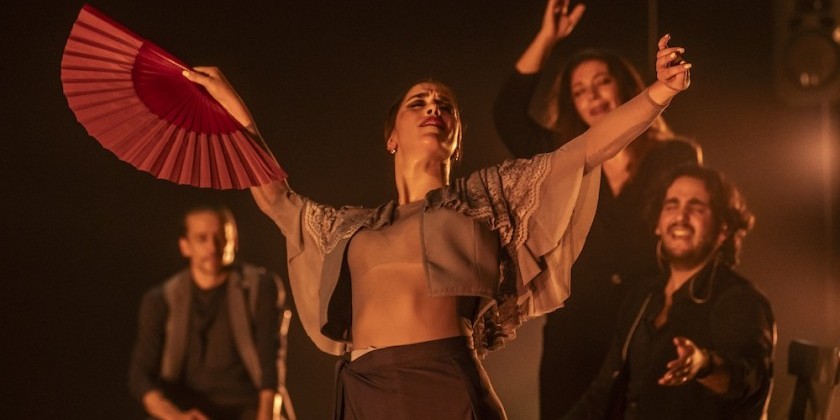SPECIAL TO THE DANCE ENTHUSIAST: Dance as Trance, Dance as Ritual

By Susan Osberg - Dance Performance Artist, Writer, Healer, Teacher
SPECIAL TO THE DANCE ENTHUSIAST:
SUSAN OSBERG—Dance Performance Artist, Writer, Healer, Teacher --
SUSAN OSBERG—Dance Performance Artist, Writer, Healer, Teacher --
DANCE AS TRANCE, DANCE AS RITUAL
©2009 Susan Osberg
I always assumed that contemporary dance was a ritual for secular times. The performance space is heightened, the people gather to witness activities, directed by the extreme presence of embodied human beings, moving in various structures that hold intent.
.jpg) |
I mean, if we go to a movie, it is different, we sit in the dark and go into the dream space of the film and dissolve. But the shared presence of a dance performance always seemed like a ritual to me. The ritual of chance operations in Cunningham’s work, the synchronized gesture in Trisha Brown’s soft sequences, and the slow motion yearning in Eiko and Komo’s work are cases in point.
.jpg) |
But the traditional ceremonies are very different, etched out of time and polished to their core they are vehicles to the sacred. This conversation about dance and ritual began at Dance Across Borders, when I directed a festival at Bard College in 2007.
Three of us from Dance Across Borders, Catlin Cobb, Susan Osberg and Mireille Feyzeau, continued this dialogue in France in 2009.
.jpg) |
Jardin d’Alice is a family vineyard in the small village of Nererean, in the south of France. Mireille Feyzeau grew up there, ran through the vineyards, listened to the Bell clock strike in the 12th century church from the center of town, and watched the sunrise and sunset on the lush horizons, where horses graze, birds fly, and the local wines of Bordeaux are made. Her ancestors lived on the same soil. Now she is back home.
She’s created a dance studio and a place for retreats; here we taught our workshop Dance as Trance and Dance as Ritual for a week, exploring dance as spirituality, while constructing reverent and irreverent events.
.jpg) |
How do the forms of contemporary dance and spiritual practice intersect now? What is the difference between ritual and site specific work? We each had a background in traditional ceremony and our work was influenced by our various practices in Shamanism, Sufism, and Buddhist meditations and chanting. We offered traditional ceremonies and then branched out into contemporary process in a series of activities that took place each day. We were all invested in shifting states of consciousness through movement.
.jpg) |
Our group had diverse backgrounds in dance, theater, art, healing, business, and education and did any number of jobs to continue dancing. Right away we were a tribe of dancers, age ranging from 20-60, coming from Africa, Korea, Switzerland, France, and the USA. I noticed the level of support and good will. It felt very safe to be, just to be. Maybe this is the nature of this kind of thing, when you are committed to exploring and you have time to do it. This was in my experience-- a lot different from festivals with a performance, the tension was off and the intention took over.
.jpg) |
I anchored our work with a power point presentation, beginning with Isadora and moving forward though the history of Dance and into Performance Art to demonstrate the vast number of artists who have broached the subject of dance and spirituality. Though the subject has been taboo for a number of years, the exhibition of Art at the Guggenheim, The Third Mind, where I saw most of our contemporary art world’s influence and appropriation of Asian Spirituality, spurred me on. Indeed, Anna Halprin was in my presentation because she has worked with ceremony and ritual for years.
.jpg) |
We looked at some fantastic work in the course of a week. It was fresh and really grounded with energetically charged commitment to a given task. The last few days we had planned to have site-specific events but at the last minute we decided on rituals instead. Here I discovered the difference between them. The audience was not invited, only those who were present in the week process could witness. The intent was a dedication to something else, something bigger: like healing, retrieving a lost child, or water, or joy. The audience was a witness, they held the space and their part was as important as the ritual itself. What opened up was deep and profound, but not necessarily aesthetic.
.jpg) |
For those of us who are dance artists and choreographers, form is essential. We see it immediately and either like it or don’t. In ritual, form is also essential because it holds the intent, it is the vehicle for the sacred space, the experience, and if it is not strong, it breaks. But the audience can not go into their like or dislike – if they do, they have to own it. Their role is to be present as witnesses and to do this they need to transcend their personal view, at least for that time.
This is to say that aesthetic forms, such as site-specific works, or dances may appropriate ritual forms but they do not necessarily open sacred space. The perception remains at a personal, individual level, except when the performers take you somewhere else and they sometimes clearly do. But ritual forms are not so much about the action, but about the ineffable thing that comes from the action and that is a transcendent perception. This embodied state of awareness is available to us, but it is no better than the individual awareness. The ego is not present during ritual and we are connected in multifaceted ways to what is. In performance, the ego is also held in check so that the true spark of a dancer can come through and this is what it has in common with ritual. But the distinction is here: the dancer does not have to dedicate their dance to anything other than what they are doing and the audience comes in their every day minds.
We look forward to taking some steps further in this research, this time focusing on the personal to see how it intersects with the collective.
For More:
Dance as Trance/Dance as Ritual 2010. July 11-17. Elements of Autobiography in our Collective Landscape.
www.susanosberg.com
Dance as Trance/Dance as Ritual 2010. July 11-17. Elements of Autobiography in our Collective Landscape.
www.susanosberg.com












